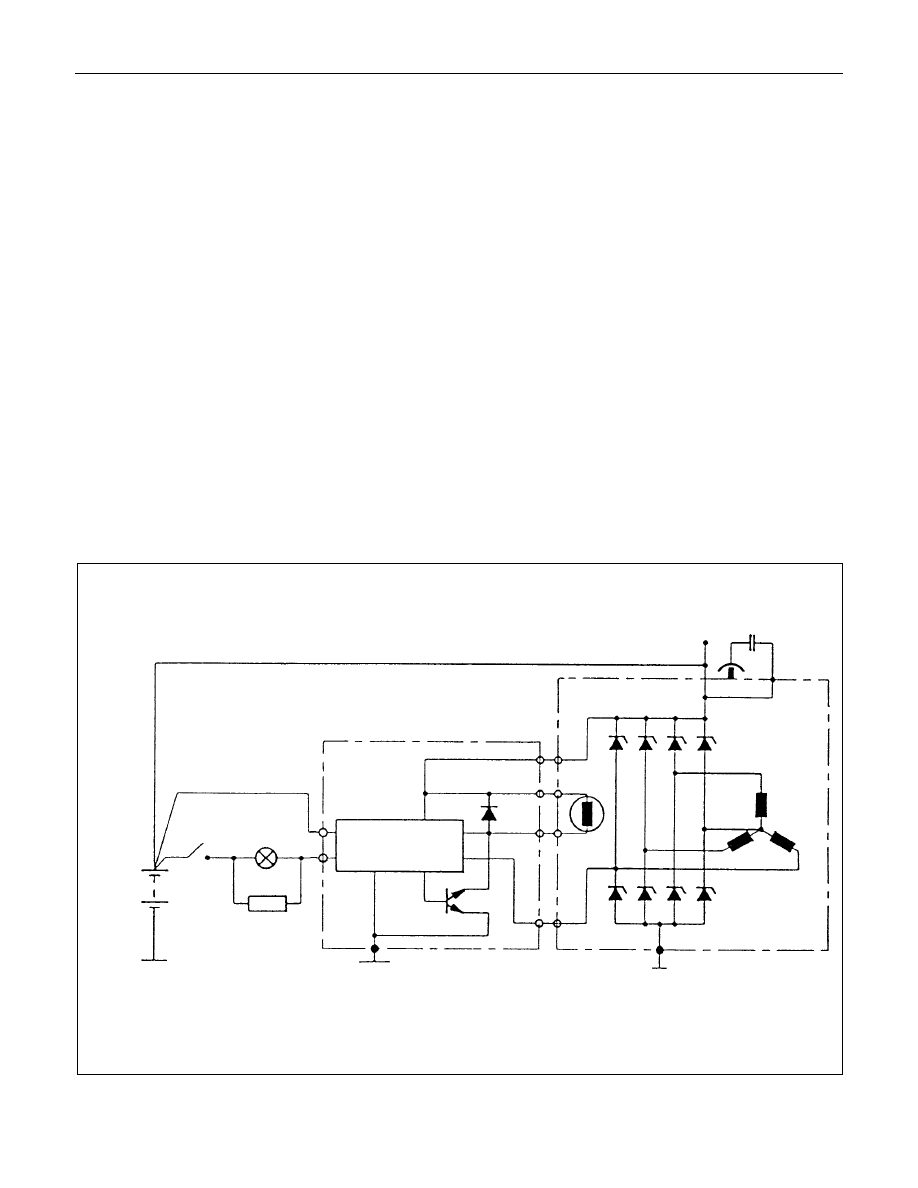Content .. 1711 1712 1713 1714 ..
Isuzu D-Max / Isuzu Rodeo (TFR/TFS). Manual - part 1713

6D3-10 STARTING AND CHARGING SYSTEM
The generator has four external connections; the "B+" lead to
battery positive, "L" lead to the warning lamp circuit(max. 2
watts), "S" lead to battery positive terminal for battery sensing
and an earth connection.
Explanation of type inscripiton
Example:KC-A--> 14V 50-90A.
K
= Code for Stator OD(126mm OD).
C
= Compact Generator.
A
= Ausland (countries other than Germany)
>
= Direction of rotation(clockwise).
14V = Generator Operating Voltage.
50A = Stabilised output at 25 C at 1800 RPM./13.5
Volts.
90A = Stabilised output at 25 C at 1800 RPM./13.5
Volts.
Generator Connetions.
B+ : Battery Main Connection (battery positive)
S
: Battery Sense Connection(battery positive)
L
: Waring lamp(via warning lamp to Ignition switch)
BATT.SENSE
REGULATOR ASSEMBLY
HYBR10
ALTERNATOR ASSEMBLY
12V BATT.
1GN.SW.
300a*
WARN.LAMP
1.2 WATT
L
S
8+
SUPPRESSOR
CAPACITOR
0.5
µf
NOTE: * RESISTOR IS RECOMMENDED TO
ENSURE THAT THE GENERATOR
REMAINS FUNCTIONAL IN CASE OF
WARNING LAMP FAILURE